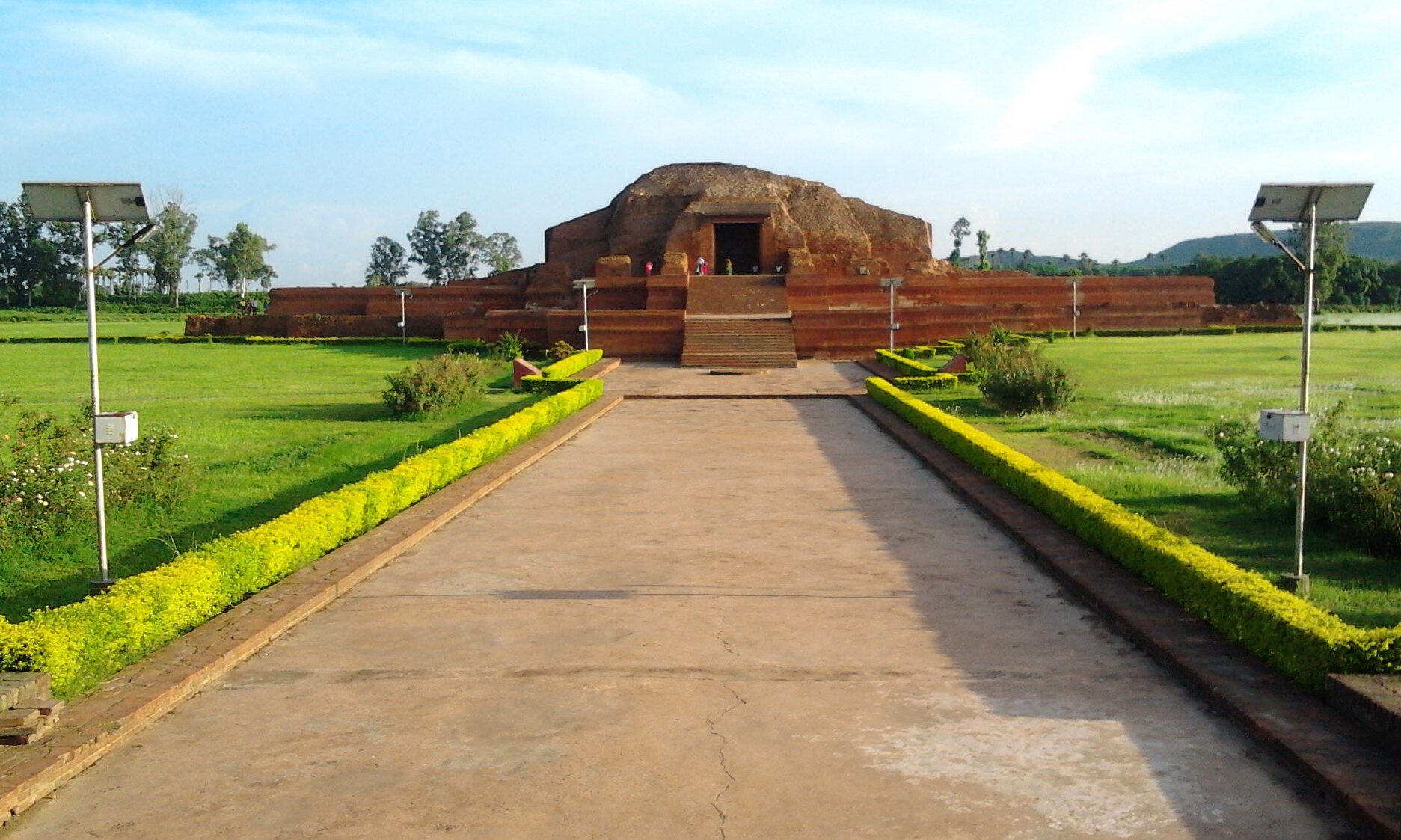
The remains of the Harsain stupa is in the form of an elevated mound, at a distance on the borders of the kabar lake, Begusarai. Aapart from Harsain, at least three another mounds were also located within the periphery of 2 km. Having yielded NBP potsherds, indicating an antiquity prior to 200 BC, the Harsain Stupa looked very interesting from a distance.
Harsain Stupa complex consisting of four stupas with the largest being in the centre and other equidistant smaller ones in three directions, one each in the west, north and south. Only one smaller southern stupa seemed to be intact due to thick vegetation cover and the main stupa was seen to have been almost cut to half by locals probably looking for constructional landfilling. It could be seen from the remains that the completely clay built stupa used to have a hard outer surface strengthened by brick-dust (surkhi), extensive remains of which were found scattered around.

Such ‘Bajralepit’ stupas are referred in the ‘Mahavansh’, and are believed to date back to the times of the Buddha. The construction of such mud stupas was in vogue only in the earlier phases of Buddhism as architecture became more advanced in the times ahead. Thus, the existence of such a remarkable stupa at the site is significant for the history of the region and needs to be understood or analysed in the context of Buddha’s visit to Anguttarap, as referred in the “Majjhim Nikaya”.
The Sin-Che temple must have been an important temple, which was held in high esteem and was located north of the Ganga. Hieun-Chiu, a master of the law, a native of Sin-Chang, in Ta-chau, with the Indian name as Prakashmati, had stayed at the Sin-Che temple.

Sin-Chiu, a doctor of the law, whose Sanskrit name was Charita-varma, had also lived in the Sin-Che temple, where in an upper room, he had constructed a sick chamber and left it for the use of sick brothers. He is said to have died in the same temple, where some days before his death, he had remarked that the Boddhisatva was reckoning him to his holy abode. Another traveller Chi-Hing is also said to have lived and died in the same temple. Hwui-Lun (otherwise called Prajnavarma), a Korean, is also said to have lived for some time in the Sin-Che temple, north of the Ganges. Wong-po or Matisimha had also visited the temple accompanied by the priest Sse-pin.

The site having been one of the original 8 relic stupas of Lord Buddha. out of the original 8 relic stupas, 6 had been identified so far and 2 remained to be identified. It was proposed that the Harsain stupa could be the one made by the Bullis of Allakappa and of the cogent reasons proposed for such identification was the very name of Allakappa, which signifies a lake, that never dries and since the Kabar lake exactly fitted the descriptions. The Bullis were a powerful clan in the times of the Buddha and may have enshrined the holy relics at their capital Allakappa. The stupa at Harsain is also seen to be very similar to the one at Piprahwa, where the Archaeologist W.C. Peppe had discovered the relics of Lord Buddha during a chance digging of the neglected mound in the late 19th century.

Harsain is not just one stupa, but a complex of 4 stupas, which indicates the ancient importance of the site. The site continued to be important till the Pala period as indicated by some very fine blackstone images including of Varaha, Badri Narayan, Ganga, Shiva-Parvati and a column in blackstone, which are some of the best specimens of plastic art of the Eastern School of Medieval Sculpture (c. 800 – 1200 A.D.).
Contents & images credits: http://silentpagesindia.blogspot.com/2020/08/ancient-remains-at-jaimanglagarh.html



















